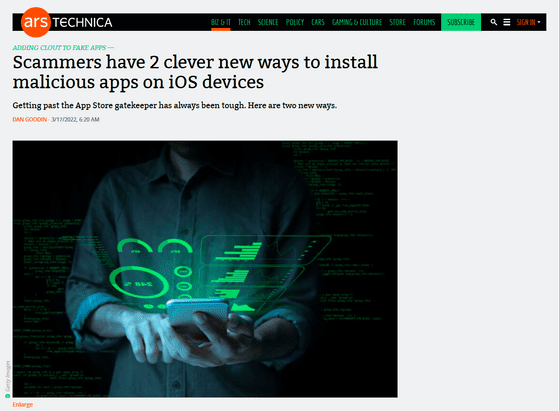How can hackers get iPhone users to install malicious apps?

All apps delivered on the App Store have been rigorously reviewed by Apple, and it can be said that ordinary iPhone users are basically protected from malware apps. Recently, there are an increasing number of ways to infect iPhones with malware by having users download apps from other than this App Store.
Scammers have 2 clever new ways to install malicious apps on iOS devices | Ars Technica

CryptoRom Bitcoin swindlers continue to target vulnerable iPhone and Android users – Sophos News
According to security company Sophos, malicious attackers are using Apple's platform, TestFlight , which can distribute beta versions of the app. Unexamined apps can also be downloaded from TestFlight, so general users can download malware apps.
An increasing number of methods for users to download apps are 'romance scams' that use matching apps. It is said that the damage of downloading malware applications without knowing it is increasing because the matching partner calls for 'you can trade virtual currency'.
Sophos warns that 'not only malware apps, but also websites that make them look real'. It has also been confirmed that a malicious attacker created the following application disguised as a BTCBOX of a real cryptocurrency exchange and distributed malware.

Also, according to Sophos, a web clip that defines the design of the icon added to the home screen is used to make the phishing site shortcut icon look like the actual app icon.
Technology media Ars Technica said, 'Whether TestFlight and web clips can be identified by knowledgeable users, inexperienced users can be fooled. Sites and messages that encourage users to download apps from outside the App Store. You need to be careful. '

Related Posts:
in Software, Smartphone, Security, Posted by log1p_kr







